Which of the following graph is correctly matched with the given reaction?
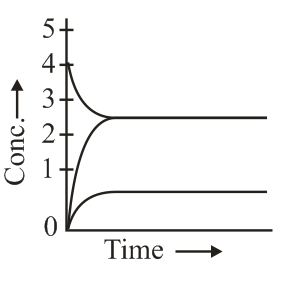
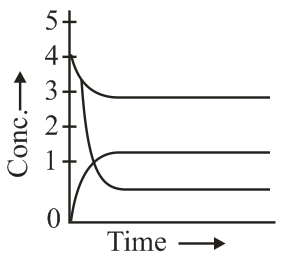
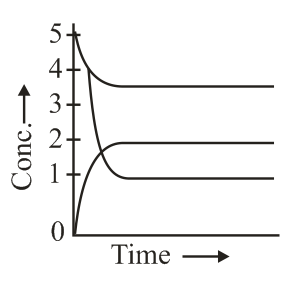
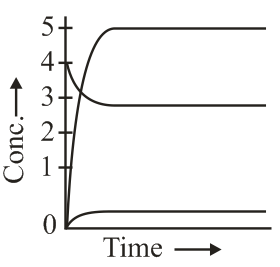
Important Questions on Equilibrium
Graph of a reversible process;
is given. Analyse the graph and answer the following question.
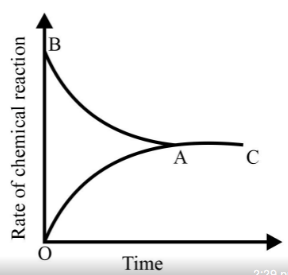
Identify the part of the graph which represents the forward reaction
[ OA, BA, AC]
Graph of a reversible process,

is given. Analyse the graph and answer the following question.
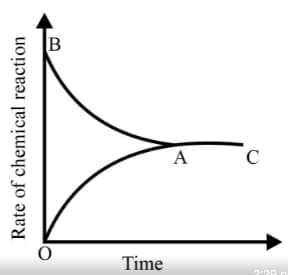
From the given statements, select the correct ones regarding chemical equilibrium.
(i0 The chemical equilibrium is 'static' at the molecular level.
(ii) Both reactants and products co-exist.
(iii) The rates of forward reaction and backward reactions are equal.
(iv) Chemical equilibrium is attained in an open system.
Using the data provided, find the value of equilibrium constant for the following reaction at and atm pressure.
At equilibrium, the mass of each of the reactants and products remains constant.
At equilibrium, the rate of forward reaction is equal to the rate of backward reaction.
and mixture reacted in vessel at After equilibrium was reached, of was present. of liquid water is pushed in equilibrium mixture and resultant gaseous mixture instantly cooled to Determine the final pressure of gaseous mixture? Neglect vapour pressure of a liquid solution. Assume all dissolved in water no change in volume of liquid no reaction of and at

For the reaction , variation of concentration is plotted against time. The time at which the equilibrium establishes is as shown:
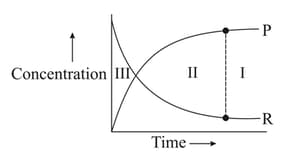
Which of the following regions show(s) equilibrium?
In the reaction , which of the graphs is/are correct?
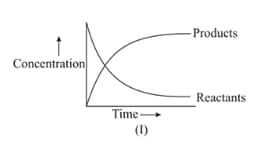
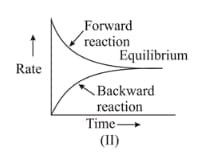
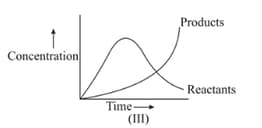
When mole of and mole of are mixed in a closed container at a constant temperature, mole of is obtained at equilibrium. Calculate the equilibrium amount of and .
Among the following reactions, which one does not represent an equilibrium condition?
Reaction of equimolar solutions of and in a closed vessel.
Few drops of water are present along with air in a balloon and temperature of the balloon is constant.
Water boiling in an open vessel over a burner, and the temperature of water is constant.
Decomposition of lime stone in a closed vessel.

